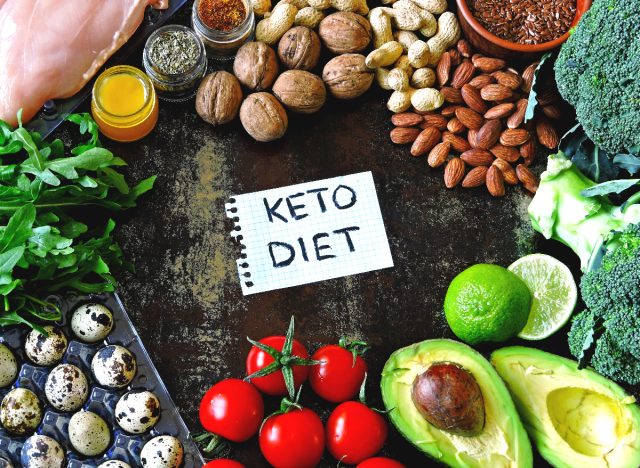If you want to change your diet, we are here to introduce you to a diet called the “2-2-2” method for weight loss. It is basically a combination of healthy eating habits, fasting and vigorous exercise. As with any weight loss routine, this one may not be for everyone. However, we spoke with a registered dietitian to find out everything there is to know about it and are here to share the details.
Read on to learn the details of the 2-2-2 method for weight loss, then talk with your healthcare professional to see if this game plan is right for you.
What is the 2-2-2 method?

The 2-2-2 method brings together keto, intermittent fasting, carb loading, and high-intensity interval training (HIIT).
“The theory is to increase your metabolic flexibility to successfully burn fat and carbohydrates in order to lose weight,” explains Amy Goodson, MS, RD, CSSD, LD, registered dietitian and certified specialist in sports dietetics, member of our Council of Medical Experts. “It alternates between two types of meals: fatty meals and high-carb meals, two non-food tactics like weekly weigh-ins and journaling, and two HIIT-style workouts.”
How is the 2-2-2 method beneficial for weight loss?


Although no studies have linked this particular diet to weight loss, research supports each component. For example, according to a study Published in BMJ Open Sports and Exercise Medicine, performing HIIT workouts can lead to weight loss and improved cardiorespiratory fitness. Another study found that the keto diet significantly decreased participants’ body mass index (BMI) and body weight.
“[The 2-2-2 method] can promote some metabolic flexibility and help some people move through weight loss plateaus, but it’s a difficult plan to follow,” Goodson points out. “From a registered dietitian’s perspective, it does not provide balanced nutrition, making it less sustainable than other calorie-controlled diets with less extreme measures.
Here are the steps if you want to try the 2-2-2 method:


Goodson shares the six-week recap of the 2-2-2 diet:
Week 1: Intermittent fasting, which should last 14 hours, then eat within 10 hours. Your meals should consist primarily of protein and carbohydrates.
Week 2: Intermittent fasting according to the 5:2 style. This means limiting your calories to 500 two days a week; on other days you can eat normally, but limit your meals to mainly proteins and carbohydrates.
Weeks 3-4: Traditional intermittent fasting, which involves fasting for 16 hours and eating within eight hours. Alternate between high-fat keto meals and high-carb meals.
Weeks 5-6: Intermittent fasting according to the 5:2 style. This means limiting your calories to 500 two days a week; on other days you can eat normally. Alternate between high-fat keto meals and high-carb meals.
This is your six-week plan! There are a few additional points to keep in mind:
“There are no set macronutrient or calorie recommendations for meals,” says Goodson. “The workouts consist of three types: aerobic exercises like walking, strength training, and high-intensity interval training (HIIT workouts).”
What to consider before trying the 2-2-2 method:


As with any extreme diet where calories are significantly restricted, it is essential to discuss your plan with your doctor or a registered dietitian. The reason?
“High-carb meals, and then very low-carb meals, have the ability to cause spikes and drops in blood sugar, leaving people hypoglycemic, which can lead to fatigue, dizziness, headaches, etc.,” warns Goodson. “Additionally, high-intensity exercises, like HIIT training, require carbohydrates as a fuel source. Not getting enough could leave an individual passing out during this type of exercise.”
Alexa Mellardo
Alexa is the Mind + Body Associate Editor at Eat This, Not That!, overseeing the M+B channel and bringing readers interesting topics on fitness, wellness, and self-care. Learn more about Alexa
#Method #Weight #Loss




